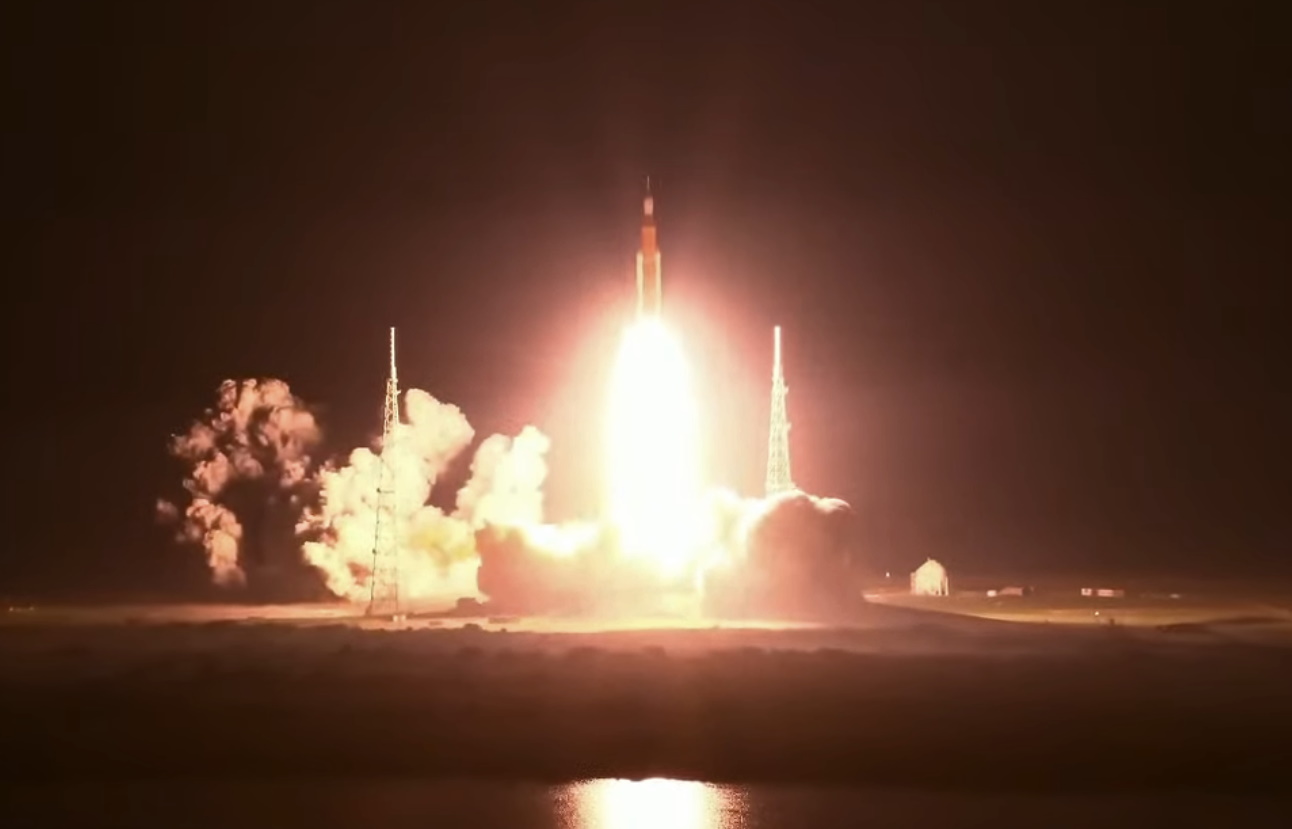The countdown for NASA SLS Space Launch System’s first flight, which is scheduled to take place on Monday and transport an unmanned Orion crew capsule around the moon and back, started ticking on Saturday. At 10:23 a.m. EDT, Charlie Blackwell-Thompson, the first female launch director for NASA, summoned her crew to their positions in Firing Room 1 at the Kennedy Space Center and started the meticulously planned 46-hour, 10-minute countdown.
In a pre-flight press conference, she assured the media, “At this moment, we are not working any big difficulties.” I’m delighted to report that everything is going according to plan. Lightning hit one of the SLS rocket’s three guard towers at launch pad 39B shortly after the briefing. In order to ensure that no delicate electrical systems were impacted by the strike, data was reviewed.
Monday at 12:18 a.m. EDT, remote engineers will begin loading 750,000 gallons of liquid oxygen and hydrogen fuel into the huge SLS rocket’s core stage in preparation for liftoff at 8:33 a.m., the beginning of a two-hour window. There is a 70% likelihood of pleasant weather, according to forecasters. The $4.1 billion SLS rocket and Orion crew capsule’s unmanned 42-day test flight marks a significant development in NASA’s effort to send people back to the moon’s surface for extended human space exploration and to test the tools and techniques that will be used on future multi-year missions to Mars.
According to Bhavya Lal, assistant administrator for technology, policy, and strategy at NASA, “with the launch of Artemis 1 on Monday, NASA is at a historic inflection point, prepared to commence the most important sequence of scientific and human exploration missions in over a generation.”
“We are ensuring that the agency’s human exploration architecture is based on a long-term strategic goal of persistent US presence on the moon, Mars, and throughout the solar system.”
However, mission chief Mike Sarafin issued a warning: “This is a test flight. We are aware that the Orion spacecraft and the Space Launch System rocket are undergoing a planned stress test. It is a brand-new design, a brand-new rocket, and a brand-new spaceship that will carry people to the moon on the next mission.
“It is really challenging to accomplish something that has not been done in more than 50 years. The test flight of Artemis 1 will teach us a lot. Although we recognize that there is a lot of enthusiasm about this, the crew is totally committed. The condition of a 4-inch liquid hydrogen quick-disconnect fitting that leaked on June 20 during a rehearsal countdown and fuelling test is a concern heading into the countdown.
After the rocket was transported back to NASA’s assembly facility, the fitting was fixed. However, until fuelling gets started Monday morning, the equipment won’t be subjected to cryogenic temperatures, in this instance, minus 423 degrees Fahrenheit, which is when hydrogen leaks generally manifest.
The launch will be scrubbed if a leak that exceeds safety regulations is found. Blackwell-Thompson, though, asserted her confidence that the fitting would function properly.
In an interview, she said that doing the test in cryogenic settings is necessary to get the entire results. We thus think we have taken all necessary steps to resolve this problem, and we will undoubtedly know for sure on launch day as part of our loading. The main objectives of the Artemis 1 mission are to assess the performance of the massive SLS rocket, test the Orion crew capsule, and return it safely to Earth while ensuring that its 16.5-foot-wide heat screen can shelter the astronauts from the intense heat of re-entry.
During the course of the journey, scientists will be able to evaluate the vibrations, sound levels, accelerations, temperatures, and pressures in the crew compartment with the assistance of an instrumented, spacesuit-clad mannequin known as “Moonikin Campos” and two artificial female torsos. Additionally, they will study the radiation environment of deep space.
If the mission is successful, NASA will go through with plans to send four actual humans in late 2024 on a looping free-return route around the moon, followed by a mission to land two men near the moon’s south pole as early as 2025.
The success of that mission will largely rely on Congress’ continuous support, the creation of new spacesuits for the moonwalkers, and SpaceX’s production of a moon lander based on the blueprints of its future Starship rocket, which has not yet reached space. Although NASA officials claim to be confident, it is unclear how feasible a landing in 2025 will really be.
“We are acting as if it is. Astronaut Randy Bresnik said, “We have to, or it ends up being an open-ended question that we never answer. SpaceX is also aiming toward that speed. So it gives us tremendous optimism that we’ve got the ideal partner for this first trip if we’re going to get there, Bresnik added. “The suits work with the Starship and the lunar lander. One without the other is not possible. As a result, in the next months, we’ll have more clarification.
Source: CBSNews

